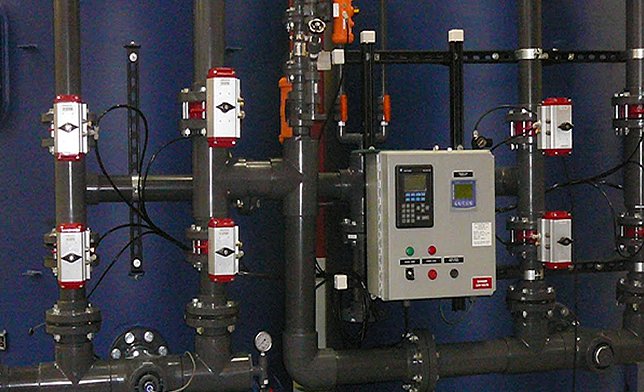Applications
In general, a dealkalizer is best applied to boilers operating below 700 psi. In order to justify installation of a dealkalizer on low pressure boilers, the alkalinity content should be above 50 ppm with the amount of make-up water exceeding 1,000 gallons per day.
Cooling water systems also benefit from reduced alkalinity. The addition of a dealkalizer to a cooling system will substantially reduce the amount of acid required to treat the same amount of water.In addition to dealkalizing, these systems can be used to reduce nitrates and sulfates by utilizing specific anion exchange resins.

Applications
In general, a dealkalizer is best applied to boilers operating below 700 psi. In order to justify installation of a dealkalizer on low pressure boilers, the alkalinity content should be above 50 ppm with the amount of make-up water exceeding 1,000 gallons per day.
Cooling water systems also benefit from reduced alkalinity. The addition of a dealkalizer to a cooling system will substantially reduce the amount of acid required to treat the same amount of water.In addition to dealkalizing, these systems can be used to reduce nitrates and sulfates by utilizing specific anion exchange resins.

